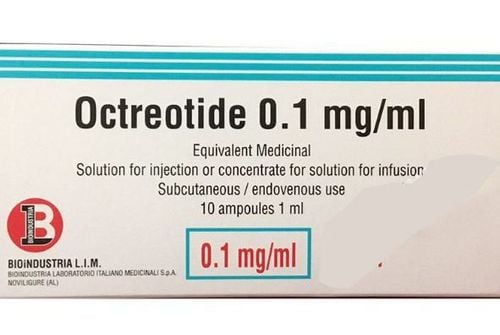This is an automatically translated article.
The article was consulted with Associate Professor, Doctor, Doctor Huynh Thoai Loan, Head of Pediatrics - Neonatology - Pediatrics - Neonatology Department, Vinmec Central Park International General Hospital
As a parent, everyone wants their child to be born tall and healthy. However, in reality, many parents have a relatively tall height, but their children are only average. So what is the cause of this situation and how to fix it effectively. Parents and interested readers are invited to follow the information in the article below.
1. Child growth and development index
Anthropometric indicators such as height and weight are important indicators of a baby's physical growth and development. In 2006, the World Health Organization (WHO) released a growth chart by age and sex to help health workers as well as parents of young children to monitor the growth rate of the baby's height or weight. Parents can join the growth chart in the baby's health handbook. Normally, a child from birth to 1 year old can increase 25cm/year, from 1 to 4 years old can increase by 10cm/year on average, children from 4 to 8 years old increase by 5cm/year, children from 8 years old can increase by 5cm/year. up to 12 years old increase 5 cm/year. A child is called Short when the recorded height is less than 2 standard deviations compared to peers of the same age and sex; and/or when height does not match the growth rate for age.
2. Factors affecting the height of children
The growth of children's height is influenced by many factors such as genetics of parents' height; nutrition, some chronic diseases, genetic mutations and growth hormone content. Some important milestones in height development are fetal stage, infancy, pre-puberty and puberty. During these periods, the baby needs to be provided with a full range of nutrients such as calcium, vitamins A, D, iodine, iron, zinc to promote as well as maximize the potential for height growth. However, children with chronic diseases such as liver disease, kidney disease, congenital heart disease, thyroid disease, congenital hypothyroidism can limit their height. Besides, some chromosomal mutations such as Down syndrome, Turner syndrome, Prader-Willi syndrome affect the baby's height development. In addition, children with low growth hormone levels will not reach the same height as their peers.
In addition to the factors affecting the height development mentioned above, genetic factors from parents play a significant part in forming a child's potential height from the fetal period.
Formula to estimate child's height based on parent's height is as follows:
For girls: Child's height = (Dad's height + mother's height - 13 cm)/2 For boys: Child's height = (Father's height + mother's height + 13 cm)/2 When either parent or both parents are < 155 cm tall, the child's height will be restricted. However, genetics account for about 30% of the child's height growth, and much of it depends on other factors, especially nutrition. This explains why there are many pairs of parents with outstanding or average height, but the height of their children is short.

3. Monitor the growth chart to detect the signs of short stature in children
It is very important to monitor the growth of the baby's stature, using the growth chart between the ages of 2 and 5 years, to detect some early signs of short stature such as: baby is less than -2 standard deviations; the child's height growth rate does not reach the growth milestone according to age; especially when the family has a parent or close relative whose height is less than 155 cm. Since then, medical experts have examined and performed more in-depth screening tests to find the cause of short stature, and provide the necessary interventions and advice to improve the baby's height.
At Vinmec International General Hospital, the baby's height screening is performed by a team of pediatric endocrinologists with good expertise and rich clinical experience. During the screening process for the causes of delayed growth in height, the doctor may assign the baby to do some exploratory tests in stages as follows:
Bilan test kit to find the cause of short stature includes : blood test, x-ray of hand bones to evaluate bone age, abdominal ultrasound. If your doctor suspects a growth hormone (GH) deficiency, your child will need to have a GH-stimulating test done at the hospital, which will help determine the possibility and extent of a growth hormone deficiency. If it is determined to be delayed in height growth, the child is indicated for GH hormone therapy. Children are instructed to inject GH with special tools to ensure convenience, safety and avoid causing pain for the baby, by the professional medical team of the hospital's Department of Pediatrics and Neonatology, in order to achieve the optimal effect of the treatment. treatment with GH. Therefore, parents can rest assured when recognizing abnormal signs of the child's height to have an intervention plan, support treatment when necessary.
Please dial HOTLINE for more information or register for an appointment HERE. Download MyVinmec app to make appointments faster and to manage your bookings easily.
Note: This article is part of the Vinmec International General Hospital System's Awareness Program on Growth Retardation, with the support of Novo NordiskReferences:
Craig Barstow et al, 2015, “Evaluation of short an tall stature in children”, Am Fam Physician, 92(1): 43-50 https://www.aafp.org/afp/2015 /0701/p43.html
:~:text=Short%20Station,-Jump%20to%20section&text=Tall%20Stature-,Short%20stature%20is%20defined%20as%20a%20height%20more%20than%20two,age% 20without%20a%20known%20etiology. Laurie R. Braun and Rose Marino, 2017, “Disorders of Growth and Stature”, Pediatrics in Review July 2017, 38 (7) 293-304; https://pedsinreview.aappublications.org/content/38/7/293 Rawan Ali Almutairi, 2018, Review article “Short stature in children”, International Journal of Medicine in Developing Countries, 2(1), 9-15














